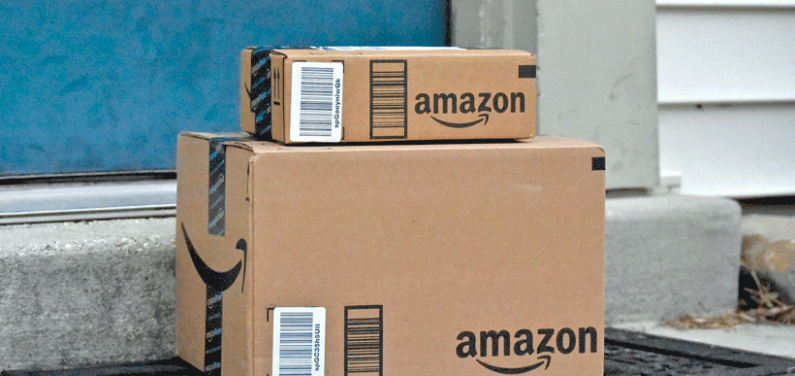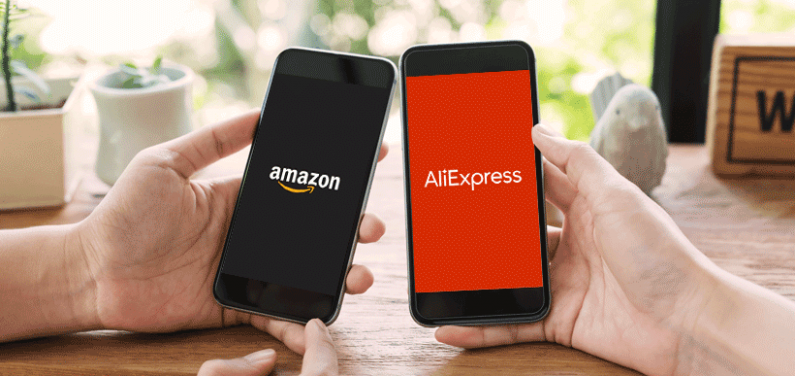If you’ve done any research into launching an e-commerce business, you’ll have come across the two most popular business models for online entrepreneurs: Amazon FBA and dropshipping.
Amazon FBA is best for:
- Reaching millions (maybe even billions) of Amazon customers right away
- If you already have inventory of your product
- Wanting to sell your product but not deal with all the customer service and logistics
- Higher profits as you'll be buying in bulk from your supplier and selling it at a better margin
- Not having to deal with the details of branding or marketing and having Amazon sell for you
- Boosting customer trust as you'll be selling on Amazon with fast Prime shipping
Dropshipping is best for:
- Starting a business with low upfront investment
- Testing winning products with lower risk as you won't have leftover unsold good
- Flexibility with which product to sell as you won't be holding inventory
- Less hand's on approach as your supplier will be fulfilling all your orders
- Better cash flow as your money won't be tied up in inventory
- Mobility with where you work - you can basically work anywhere in the world
You can make money with both of these models. But there are advantages and disadvantages, and these strategies won’t be a good fit for everyone.
In this guide, we're going to explore the pros and cons of both methods. By the end of the post, you’ll have a much better understanding of what each strategy involves and which one is right for you.
You’ll be able to make an informed decision and choose the business model that suits your circumstances and goals.
Dropshipping vs. Amazon FBA [Comparison table]
If you want a quick overview before we get into the details, here’s a comparison of the main pros and cons of Amazon FBA and dropshipping:
| Dropshipping | Amazon FBA | |
|---|---|---|
| Upfront Costs | Low | High |
| Risk | Low | Higher Risk |
| Profit Margins | Low | Higher |
| Customer Base | Starts Small | Access to Large Audience |
| Fast Shipping | No | Yes |
| Scalability | Good | Limited by Budget/Products |
| Competition | High | High |
You can make more money per sale with Amazon FBA, but you also have to invest a lot more to get started.
That’s not the only difference you need to know before deciding which model is best for you.
Let’s take a closer look at the pros and cons of dropshipping and Amazon FBA.
What is dropshipping?
Dropshipping is an e-commerce business model that enables you to launch an online store and sell products without purchasing any inventory or shipping any products.
You source dropshipping products from suppliers that offer order fulfillment services. When a customer purchases a product from your store, the supplier ships the product directly to the customer.
The dropshipping model has become one of the most popular ways to make money online. It’s a growing industry that is estimated to achieve a compound annual growth rate of 32% from 2021 to 2026:

The business model involves little to no risk. You don’t need to bulk buy hundreds of products that may or may not sell.
Dropshipping allows you to launch an online business with minimal upfront investment especially if you use tactics such as Amazon dropshipping.
How to start a dropshipping business?
So how do you actually start a dropshipping business. Of course, that's an entirely different topic that requires a lot of details - but in summary, here is how you create your own dropshipping business: First, you'll need to choose a niche that you want to start your dropshipping business in. It can be any niche but you'll want to do research here to see if the market is big enough and if the niche actually has the potential to be profitable. Second, you'll want to start finding suppliers for your products, which can be easy or difficult depending on your method of research. Next, you'll need to decide what platform you want to sell on whether it's a marketplace, your own site, or a social media platform. Once you get your store up and running, you'll then need to focus on the daily operations as well as how to scale it to the next level.
Pros & cons of dropshipping
Dropshipping is a low-risk strategy, but there are negatives to this e-commerce model.
Here’s a breakdown of the pros and cons of dropshipping.
Pros of dropshipping
1. Low upfront investment
It has a low barrier to entry with minimal initial investment.
You don’t need to spend money on inventory or a business premises to get started with dropshipping. The only costs involved are setting up an online store, ordering a few samples to find the right supplier and marketing costs.
2. Low risk
The only risk involved is wasting time promoting a product that doesn’t sell. You won’t have hundreds of unsold products in your garage or costing you money in storage fees.
3. Flexibility
Because you don’t have to purchase inventory, you can try out new products and see how they perform. You can list an extensive range of products without having to carry stock. If a product doesn’t sell, you can quickly drop it and try a different product.
With traditional e-commerce and Amazon FBA, you would have to invest in expanding your inventory to extend your range of products.
4. Passive income stream
Every business requires dedication and effort to succeed. But when your dropshipping store is set up and generating sales, you can make money while you sleep.
Your supplier will handle the fulfillment. You don’t need to pack any products, manage your inventory, or handle the shipping process. With the right supplier, dropshipping can be a lucrative way to generate passive income.
5. Improved cash flow
Insufficient cash flow is the reason why 82% of new businesses fail.
With a standard retail or e-commerce store, the business owner needs to spend money buying products before they can sell them. This means capital is tied up until the products are sold.
With dropshipping, you don’t need to tie up money in inventory. Instead, you can invest in marketing to grow your business and only pay your supplier when you make a sale.
6. Work From Anywhere
With your supplier handling order fulfillment, you can work from anywhere in the world with an internet connection. You can run your store from your laptop.
Cons of dropshipping
1. Low-profit margins
The average profit margin for a dropshipping product is lower than other e-commerce business models. When you bulk buy hundreds of products at once, you can negotiate a lower cost per item and generate a larger profit per sale.
With dropshipping, you’re purchasing products one at a time as you receive orders. You can increase your margins by raising your prices, but you risk losing sales if you become too expensive.
2. High competition
One of the key benefits of dropshipping is the low barrier to entry. However, this also means that the competition is high.
You will always find dropshipping competitors in your niche selling similar products. You need to build your brand and stand out from the competition to succeed.
3. Less control
Finding a reliable supplier is vital for dropshipping. Because the products you sell are sent directly from the supplier to the customer, you have very little control over the quality.
The reputation of your store and your brand depends on your supplier. You can minimize the risk by ordering a sample product before you list a product in your store.
4. Disjointed supply chain
If you sell an extensive range of products from different suppliers, a customer’s order will arrive in separate packages and often on different dates. This means shipping costs can be higher for your customers.
What is Amazon FBA?
Fulfillment by Amazon (FBA) is the e-commerce giant’s fulfillment service for sellers. You can use Amazon’s distribution and logistics network to handle the packing and shipping of your products to customers.
You send your goods to Amazon, and FBA will handle the rest.
Amazon has seen tremendous growth over the last decade:

Using Amazon FBA, you can tap into a growing marketplace where net sales reached $386.06 billion in 2020.
"Selling on Amazon offers everybody the opportunity to create a retail business open to millions of customers, without having to go through the process of finding store premises, incurring large overheads, or spending large amounts of money on advertising," explains Janson Smith, an Amazon seller that makes up to $100,000 monthly revenue.
How to get started with Amazon FBA?
In this section, we'll briefly explain how to get started on selling on Amazon FBA. If you want more information, click the guide below as it'll give you more details on the step by step process of selling on Amazon FBA. When you decide on which product you want to sell, simply sign up to the Amazon FBA program to start selling. Amazon FBA is different than dropshipping in that you'll have to pay for your inventory upfront. You'll then have to send your products directly to Amazon's warehouses where they will store the inventory for you. Once you get an order, Amazon will ship your product directly to the customer with their Prime shipping method. The great thing about Amazon FBA is that you don't have to worry about storing inventory at a warehouse and Amazon will manage all the customer support for you. Plus, you'll instantly have access to billions of customers right away.
Pros & cons of Amazon FBA
Around 9 out of 10 online shoppers use Amazon to price check products before making a purchase. Amazon is the biggest name in e-commerce, and it can be a lucrative place to sell online.
But there are some significant challenges for FBA sellers. This isn’t a suitable business model for everyone.
Let’s take a look at the pros and cons of Amazon FBA.
Pros of Amazon FBA
1. Access a large customer base
Amazon has a huge customer base that you can instantly start selling to. You can get your products in front of a wide audience of potential customers.
"It's a beginner-friendly business model that's capable of accelerating anybody's business to a 6-figure one in a matter of months, thanks to Amazon's insanely high levels of traffic and sales conversion," explains Smith. "Thanks to the power of selling on Amazon, I've been able to create a business that regularly sells upwards of 200 units a day, and the best thing is that I don't even need to leave the house to be able to do that - Amazon does it all for me."
With dropshipping, you need to build up your customer base from scratch.
2. Increased profits
You can expect to earn a bigger profit margin on each product sold. The downside with FBA is that you need to bulk buy products upfront, but that does mean you can negotiate a discount with suppliers and earn more per sale.
"The best types of product to sell on Amazon are those that are priced below the $40 / £30 mark, because at this level they are more impulse purchases and don't require much additional thought from the customer," advises Smith. "It's recommended to also sell products that aren't too bulky and heavy, so that shipping, storage, and fulfillment costs are kept low. To increase sales and conversion, always put yourself in the customer's shoes when thinking about the product. What problems does it solve, and why should the customer care? If you can answers these succinctly through your listing description, and if the product does indeed solve them, then you are onto a winner."
3. Customer service and returns management
Amazon FBA handles the packing, shipping, and returns process. So you don’t need to spend your time dealing with returns or refunds - all of this is covered by FBA.
4. Fast delivery
Amazon FBA products qualify for free Amazon Prime delivery. As a result, your customers can benefit from fast delivery at no additional cost to you. With dropshipping, many suppliers are based in China, and delivery can take 7 days or longer.
5. Boost consumer trust
Consumers are familiar with the Amazon brand. It’s one of the most trusted places to buy products online. By joining Amazon’s FBA program, you can immediately benefit from the “Fulfilled by Amazon” note on your product listing.
This will have an impact on consumer trust and conversions. Amazon shoppers will trust you more and will be more likely to click “Buy now.”
Cons of Amazon FBA
1. Upfront cCost
The Amazon FBA model costs a lot more than dropshipping to get started. You’ll need to purchase inventory upfront before you start selling through Amazon’s fulfillment service.
Due to how Amazon’s fees are structured, low-cost products are not well suited to the FBA model. As a result, you’ll need to be selective about the products you enroll in the program.
You can use the FBA calculator to see if using the service is viable.
2. Higher rate of returns
One of the reasons Amazon has been so successful is its open returns policy. According to a 2018 report, 82% of consumers want to see and experience a product before committing to a purchase. Amazon’s open returns policy helps shoppers to overcome that barrier to purchase.
However, the generous returns policy does mean that many sellers report a higher returns rate on the platform.
3. Storage fees
The longer your goods take to sell, the more you will have to pay in storage fees to Amazon. You’ll have to consider discounts to shift stock or have excess inventory returned to your facility to avoid fees for slow-selling products.
4. Amazon product requirements
To enroll products in FBA, you’ll need to make sure your inventory meets Amazon criteria. This includes packaging and labeling requirements. You can find a complete list of FBA requirements and guidelines on the Amazon website.
5. Harder to build your brand
With all customer communication taking place through Amazon, you won’t be able to build a list of your customers or develop unique branding to help your products stand out from your competitors.
You’re using a third-party platform rather than building your own audience and customer base.
6. Lots of competition
There are tons of competitor products on Amazon which can be hard for your products to stand out. The key, however, is to figure out what your USP (unique selling point) is and make sure you make that known to your potential customers.
"The main thing that every seller must ensure they do, is providing 'value add' to the customer," explains Smith. "Many beginners make the mistake of thinking they can simply imitate another seller's product and replicate their success, which doesn't often work. Instead, sellers should look for opportunities to improve upon the offer and the product, and ensure that this is clearly communicated to the customer, so that they are compelled to buy!"
Which is better, Amazon FBA or dropshipping?

Dropshipping is the better option if you’re new to e-commerce and looking to get started with a low-cost and low-risk model. You can avoid investing money in inventory that might not sell and keep your overheads down.
It’s easy to get started, and you can pivot to a different niche if you find it too competitive. All you need to do is find new suppliers, switch your theme to a new domain, and start your new store.
The upfront cost is low, and you won’t lose money on unsold inventory.
If you’ve gained some experience with dropshipping, have a good idea of which products sell best in your niche, and want to expand your business, Amazon FBA is a logical next step.
It requires much more investment, and there is more risk, but the rewards can be greater.
Amazon FBA vs. Dropshipping FAQs
Dropshipping vs. FBA: Which is cheaper to start?
It requires much less upfront investment to get started with dropshipping. You don’t need to purchase inventory and only pay when a customer makes a purchase.
The only costs involved are the expense of launching an online store and finding products. You can use Shopify and pay a monthly fee or create a WooCommerce store to reduce costs further.
You’ll also need to promote your products. You can spend hundreds of dollars and generate fast results using Facebook Ads or choose a longer-term SEO strategy for little to no cost.
With Amazon FBA, you’ll need to purchase inventory in bulk. You’ll also need to promote your products using Amazon SEO and paid ads.
Overall, the dropshipping business model is much cheaper to get started.
Which type of business is easier to run, Amazon FBA or dropshipping?
With FBA, Amazon will handle everything from packing and shipping to returns and refunds. This means you don’t have to worry about customer service.
Once your inventory is enrolled, you don’t need to do anything other than promote your products and manage your listings. It’s a hands-off approach that leverages Amazon logistics and customer support infrastructure.
With dropshipping, your fulfillment partner will handle the packing and shipping of your products. However, you will be responsible for customer service. Of course, you could hire customer support representatives, but this can eat into your profits.
Generally, it’s easier to run an Amazon FBA e-commerce business.
Is Amazon FBA more lucrative than dropshipping?
Just like every e-commerce model, it depends on the individual business. For example, there are many highly successful dropshippers and many profitable Amazon FBA businesses.
With dropshipping, you can test out lots of different products without the risk of investing capital in inventory. This means you can find winning products for your dropshipping store much faster. You can then scale up your advertising and promotion to generate more sales.
You will also be able to track visitors to your website and take advantage of remarketing to capture more sales. There’s also an opportunity to build an email list and establish another lucrative marketing channel.
With Amazon FBA, you need to invest more money at the start and grow your business step by step. You need to find the right manufacturer and purchase inventory in bulk before shipping it to the Amazon warehouse.
Unless you have a big budget to play with, you’ll need to wait until you have made a return on the inventory before investing in new products to add to your range.
Because everything takes place on the Amazon platform, you also won’t have the opportunity to use remarketing or build an email list. It can be harder to scale when you’re dependent on a third-party marketplace.
With that said, you can still achieve great success with Amazon FBA. "Since I first started selling in 2018, I have grown to offer 15 of my own brand of products," explains Smith. "On a monthly basis I am generating $100,000 in revenue, and was recently approached by an investor who wanted to buy my business. I'm incredibly passionate about selling on Amazon and teaching others how to do it."
Is dropshipping less risky than Amazon FBA?
Yes. There’s much less risk involved with the dropshipping e-commerce business model. Aside from product samples, you don’t need to pay for any inventory before you start selling a product in your dropshipping store.
You can also expand your product range and try out different products with little to no additional costs.
With Amazon FBA, you need to pay upfront and buy products in bulk. You can negotiate cheaper costs per product, but you will need to risk capital on products that may not sell.
There’s much more risk involved with Amazon FBA.
Is there a difference in how I find suppliers for Amazon FBA and dropshipping?
Generally, you need really trustworthy suppliers for both. In dropshipping, if you are selling your customers shoddy products, you're going to have to deal with a lot of customer complaints and high return rates. In Amazon FBA, if the product isn't high quality, your product reviews will suffer.
"Amazon customers make purchasing decisions based on product reviews, so if your product suffers from poor quality, then so will your reviews and ultimately your sales," says Smith. "It's therefore key that you find a supplier who won't let you down when it comes to offering a product that is of high quality. It's also really important to find a supplier that is able to communicate well, has a good grasp of English, and is reliable. If any of these are below standard, then your business is likely to suffer. In order to find the right supplier, my best advice is to speak to a range of them and get a feel for their level of English and their communication skills before progressing further. Once you've narrowed the list down to 3 or 4, order samples from them so that you can judge the quality of the product. Remember that having a good supplier shouldn't just be based on the product itself, but everything together."
To look for trustworthy suppliers, you can head to SaleHoo Directory where you can contact 8,000+ high quality suppliers that have gone through a rigorous vetting process.
Which One is Easier in Terms of Marketing?
If you don't have a lot of time to spend into marketing, Amazon FBA is definitely the way to go as you don't need your own website or any social media channels. From logistics to storing inventory to answering customer service requests to pushing your products to customers, Amazon takes care of all of that for you so you don't really need to spend anytime marketing. All you have to do is ship your products to Amazon's warehouses and they'll do the rest.
Conclusion
The right e-commerce business model for you will depend on your circumstances and your level of experience.
Generally, it’s much easier to get started with dropshipping.
If you’re looking to increase your margins and invest in your business, Amazon FBA can be a great way to expand. You can use the revenue you generate from your dropshipping business to get started with Amazon private labeling.












